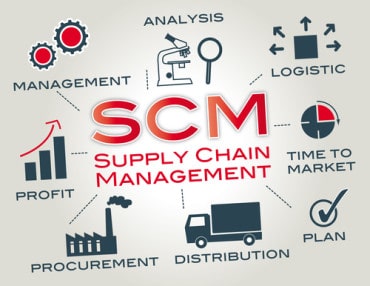
Using 5G, manufacturers are better equipped to promote agile responses to emerging disruptions with increased access to information.
As consumer demands shift and external pressures increase, manufacturers are increasing investments in new technologies to accelerate operations and improve resiliency and adaptability. The industry is increasing its deliberate collection of information through advanced technologies and devices. In fact, as the use of technology in the sector grows, the expanding use of big data in the manufacturing industry is projected to reach 9.11 billion by 2026, almost tripling in value since 2018. The expansion of data is not only a byproduct of these devices but also a core component to improving agility and connectivity in manufacturing.
Through the expansive use of IoT devices, data generation is growing rapidly, and forecasts predict that 56 billion IoT devices will be utilized globally by the year 2025. This equates to about 90 zettabytes of data produced throughout the industry. With the increased adoption of IoT devices and various technologies, the manufacturing industry is challenged with integrating and connecting these various sources of data.
As the volume of data expands, organizations are examining their infrastructure’s ability to capitalize on these additional insights. Connectivity is essential to the adaptability and productivity expected of these increased investments. The implementation of new technologies requires a wireless network to increase speed of transmission, volume of information transfer and reduce lag time. With the proper network infrastructure, manufacturing facilities can increase flexibility and accessibility to information, a critical factor in improving productivity.
See also: Five Ways 5G is Transforming the Manufacturing Landscape
Promoting Productivity and Connectivity
This leads organizations to examine the benefits of the fifth generation of wireless network technology, also known as 5G. Instead of relying on wired communications or previous versions of legacy networks, manufacturers can now leverage actionable and accessible data across factories and devices with this 5G connectivity. Coupled with the growth in artificial intelligence and Internet of Things (IoT) devices, manufacturing output is increasingly dependent on communication across technology and devices.
Alongside faster communication between devices, 5G’s additional strengths include the ability to handle massive data transfers with ultra-low latency. This translates into access to time-sensitive information streams that enable improvements to critical processes across production. At the same time, 5G has allowed manufacturers to leverage advanced technology. For example, 5G’s connectivity and accessibility has enabled the use of cloud-based technology.
As 5G alleviates the need for wired connectivity, it further enables remote monitoring and access to various devices. This promotes the use of smart manufacturing practices in remote locations, fostering further innovation throughout the industry.
5G facilitates the seamless integration of new technologies in the manufacturing setting. To fully leverage 5G’s potential, organizations can integrate smart manufacturing solutions to accelerate the flow of information and capitalize on a surge of data generated through various machines and sensors. Specifically, 5G enables smart manufacturing capabilities through the following:
- Predictive Maintenance: 5G’s high bandwidth allows manufacturers to continuously analyze sensor data in real time. This enables them to predict equipment failures before they happen, proactively scheduling maintenance and avoiding costly downtime. Additionally, 5G provides a comprehensive overview of machine health and production output.
- Predictive and Prescriptive Quality: 5G’s high-efficiency monitoring empowers remote oversight of factories. This translates to improved quality control by enabling real-time tracking of production lines and remote inspections, through sensor data, all without compromising efficiency. Resulting in prescriptive insights based on real-time data sources from environmental, product, process and people-oriented data.
- Automated Guided Vehicles vs. Augmented Reality: Implementing smart manufacturing requires digitalizing all processes and providing more adaptive capabilities to the facility. 5G is a communication method that gives manufacturing access to these capabilities.
- Precision Monitoring: The ultra-low latency of 5G empowers the automation of tasks, providing manufacturers increased flexibility and precision in managing operations through remote, pinpoint control.
- Real-Time Visibility: 5G’s high-speed data transfers significantly enhance track-and-trace capabilities. This allows manufacturers to gain deeper visibility into production processes, with real-time data feeding directly into informed decision-making, providing instant access to precise location data for every component on the assembly line.
Extending the Benefits of 5G: Business Outcomes Across the Supply Chain
Due to the implementation of 5G, organizations are better equipped to promote agile responses to emerging disruptions with increased access to information. Manufacturers are increasingly recognizing the importance of this wireless network and reports demonstrate that 5G is valued as one of the top technologies providing the greatest return on investment over the past year. Moving forward, manufacturers also recognize 5G connectivity as an essential factor to the overall health of business outcomes.
Extending 5G’s benefits beyond manufacturing, this network carries the potential to drastically improve efficiency, adaptability, and connectivity across the supply chain. For example, sharing data seamlessly between sensors enables applications, such as track and trace, to provide reliable tracking information to stakeholders across the supply chain This provides critical traceability in time sensitive markets such as the food and beverage industry, the automotive industry and the pharmaceutical industry. Improving visibility and resiliency through real-time updates offers an additional layer of support to the greater supply chain ecosystem.
5G furthers manufacturers’ ability to adapt to variables such as supply chain disruptions, shifting consumer demands, and material shortages to make proactive decisions before challenges arise. Enabling flexibility across the enterprise through accessible data exchange allows organizations to easily adapt when confronted with challenges. Investing in a network of adaptable and accessible information is critical to maintaining success throughout the industry.




























